If you are on holiday in Torremolinos, after a day on the beach or a night out, try discovering the bustling center of the city following our itinerary.
Video - The center of Torremolinos
Calle San Miguel
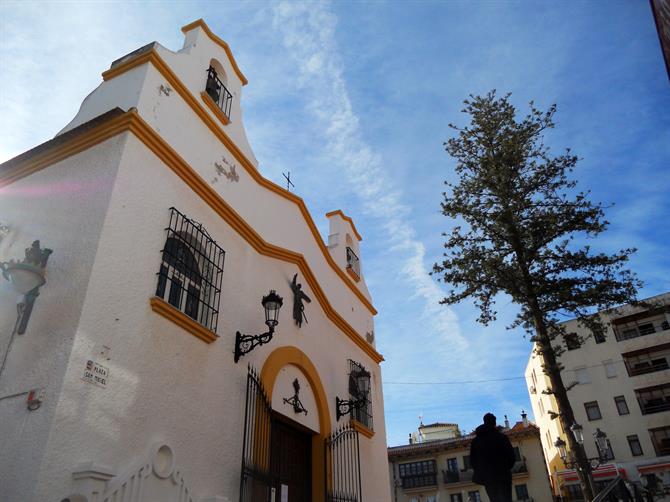
Calle San Miguel is definitely the most famous street in the historic center of Torremolinos. It crosses the oldest part of the center, and passes an infinity of shops; from jewelers to fashion boutiques, souvenir shops to delicatessens. Calle San Miguel is entirely pedestrianized and characterized by people walking up and down at all hours of the day.
Follow the street to the end and you will come to a small square, dominated by the church, ‘Iglesia de San Miguel’, built in the early XVIII in Andalusian neoclassic style.
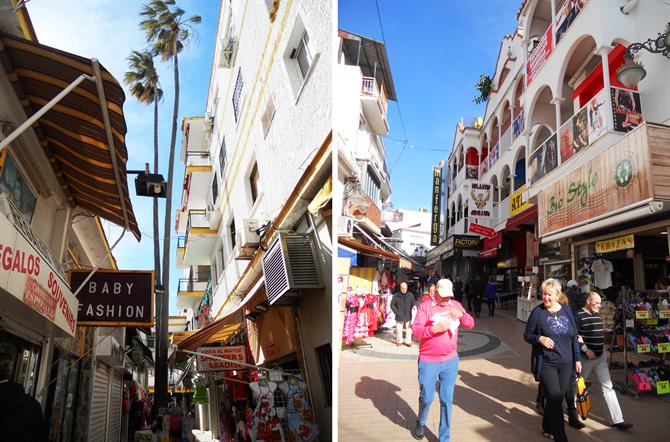
Also worth exploring are the narrow streets nearby; All the area is full of shops of all kinds. There are also picturesque squares, in particular Plaza de Andalucía and Plaza de la Nogalera, relax in the shade of magnolias and palms, maybe sitting on the terrace of a bar to watch the world go by.
Torre del Pimental
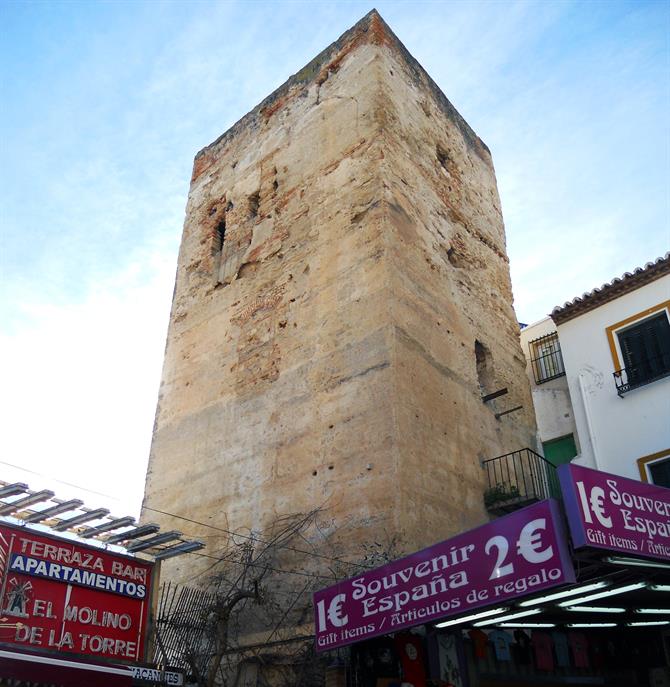
Located at the end of Calle San Miguel, at the foot of a staircase and a stone's throw from the sea is Torre del Pimentel, known as Torre del los Molinos until the sixteenth century, it is one of the symbols of the town and the only remaining vestige of the many windmills that have lent their name to this former fishing village.
Built of mud and bricks in the early fourteenth century by the dynasty Nazari and about twelve meters high, serving as an essential point of warning and defense against attacks from the sea.
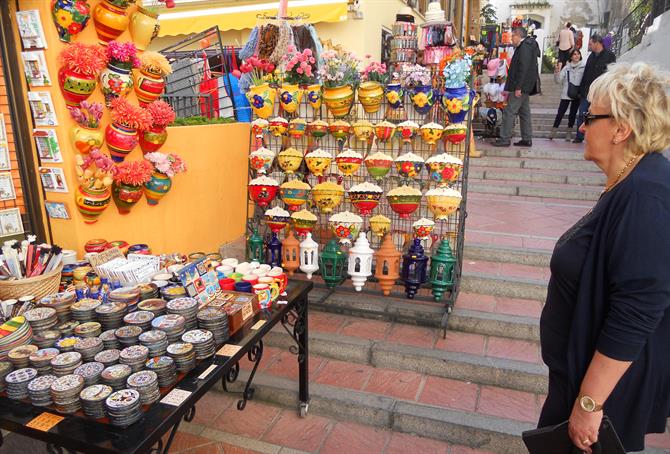
From the foot of the tower, a winding but pleasant staircase leads down to the beach of Bajondillo. Along the narrow street it passes countless shops, with a surprising and varied range of handicraft products.
Casa de los Navajas
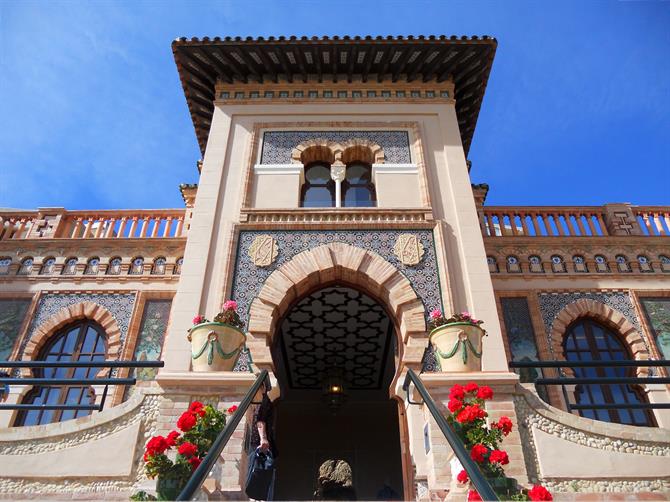
This impressive residential construction overlooking the beach of Bajondillo was built in 1925 in neo-mozarabe (widespread in Andalusia in the early '900) from the family of Antonio Navajas, a wealthy landowner in the area enriched with the export of sugar cane.
Open to the public for free tours, the Casa de los Navajas has exquisite decoration, both in the furnishings and in architectural details, and from its terrace you can enjoy a magnificent view of the sea.
Paseo Maritimo - The Promenade
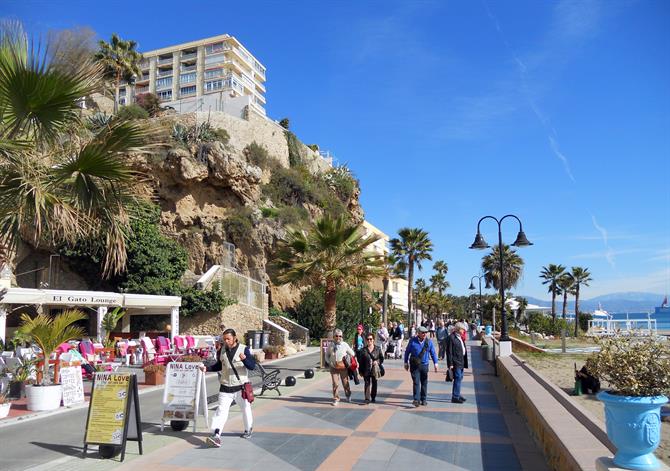
The promenade of Torremolinos surrounds almost the entire coast of the city. The section called Paseo del Bajondillo is right in front of the old town. In the far south-west, around the Punta de Torremolinos, a small rocky promontory, once home to the castle of the town, separates the beaches of Bajondillo and Carihuela.
The walk is decorated with palm trees and beach bars where you can stop and have a drink in the shade. The streets behind also offer numerous bars, restaurants with terraces and shops of all kinds. It is this district that is one of the busiest areas for nightlife, especially in summer.
Barrio del Calvario
If you looking for the soul of the people of Torremolinos, wander away from Calle San Miguel, across Avenida Palma de Mallorca, and immerse yourself in district of El Calvario, one of the oldest barrios of the town.
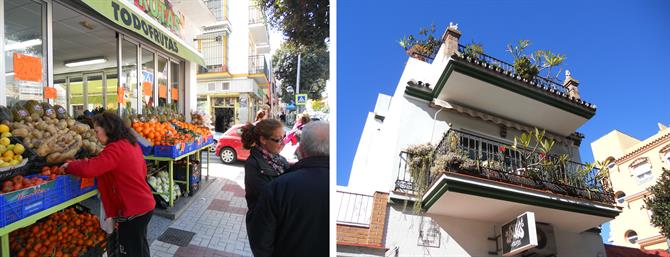
It seems that the district acquired its name due to a stipulation in force at the time of Franco, which required the naming to be of biblical origin.
It is characterized by a maze of narrow streets, overlooked by low houses, cool shade is offered by magnolias and orange trees, El Calvario is definitely an area to explore without a clear destination in mind; Here you can breathe the authentic atmosphere of an old fishing village not yet completely distorted by mass tourism.
